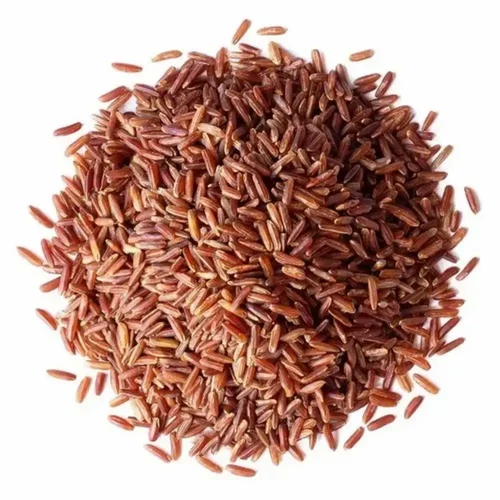Red Rice, or Sathi Chawal, is rich in iron and vitamins that help in the formation of red blood cells within the body, which is an integral process for healthy skin. Rice contains antioxidants that might quench the free radicals and save skin from early symptoms of aging. This rice variety has exceptionally high contents of manganese and antioxidants, so it is good for diabetic patients. It contains as much as ten times more antioxidants than brown rice and holds in its iron, vitamins, phosphorus, and fiber in abundance. Red rice is much more nutritious compared to its polished rice brethren.
Health benefits:
Sathi Chawal A Nutrient-Rich Option:
Moderate intake of red rice can contribute significantly to the daily intake of dietary fiber, antioxidants, and micronutrients like iron, zinc, and magnesium. The red color of rice is a result of anthocyanin, which, as far as is known, has been associated with several health benefits.
Red Rice Rich in Fiber:
Dietary fiber is an important component of digestion and health because it helps in passing stools, thereby avoiding constipation, and possibly lowering the levels of blood cholesterol.
Lal Chawal for Antioxidant:
Antioxidants protect the body against free radical damage, averting potential oxidative stress, cell damage, and ensuing chronic conditions like cancer, heart disease, and Alzheimer's.
Laal Chaval Micronutrients:
Micronutrients, in general, include iron, zinc, and magnesium, which are of paramount importance in general health. Iron is used to manufacture hemoglobin, thus transferring oxygen throughout the body. Zinc plays an important role in DNA synthesis, especially in immune functions and processes of wound healing. On the other hand, magnesium is crucial for bone health and is involved in normal muscular and nervous functions.
Scarlet red rice:
The scarlet type of red rice is significantly more enriched with antioxidants, vitamins, and minerals like zinc, calcium, and magnesium. Having only 45 grams of carbohydrates per 100 grams of cooked rice, this is adequate food to take in for those planning to reduce their weight.
Red Rice Versatility:
This is a versatile grain, rich in nutritional fibers, and can be recommended to people suffering from digestive problems. It has a lower glycemic index compared to other rice types; hence, it controls the level of sugar in the blood and prevents its sudden surge.
Red rice, known as Sathi Chawal in some regions of India, is called by different names in various states:
West Bengal: Lal Chawal or Laal Chawal
Tamil Nadu: Sivappu Arisi
Kerala: Matta Rice or Chuvanna Ari
Karnataka: Kempu Akki
Assam: Bao-Dhaan or Komal Saul
Himachal Pradesh: Chamba Chukh












